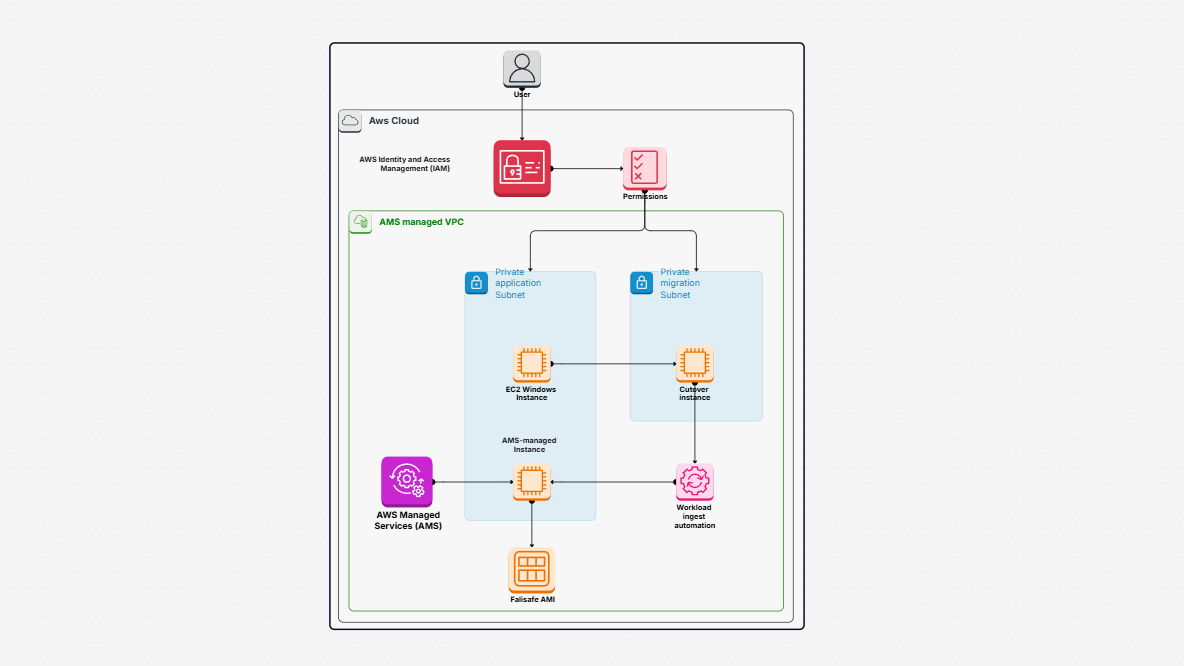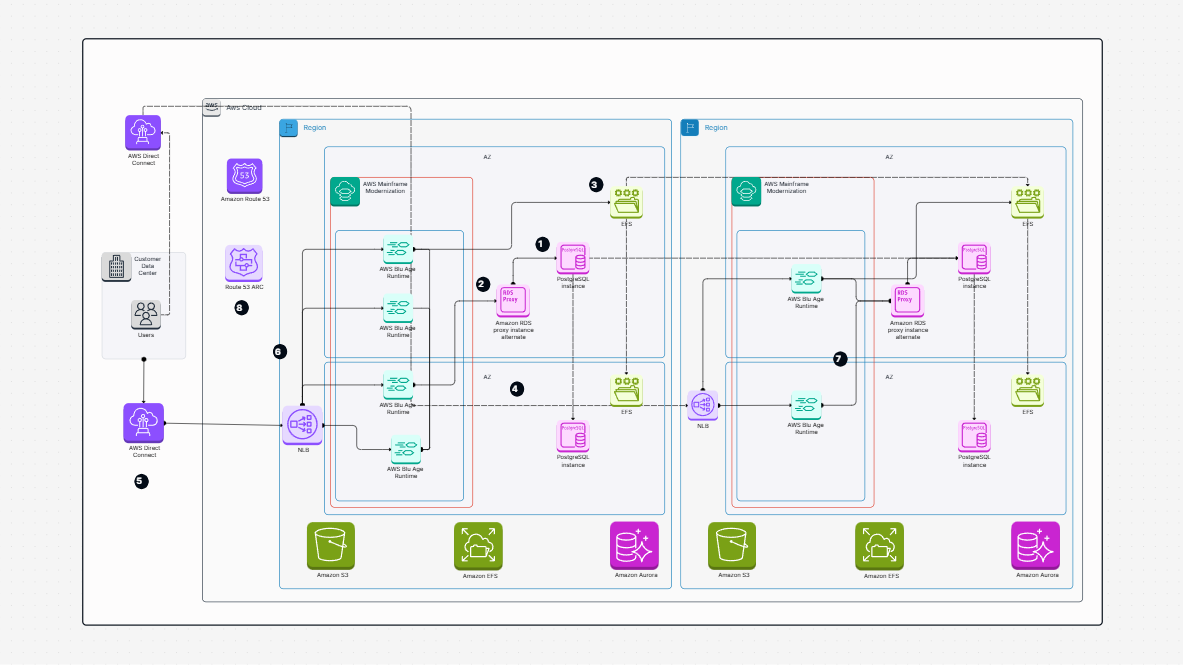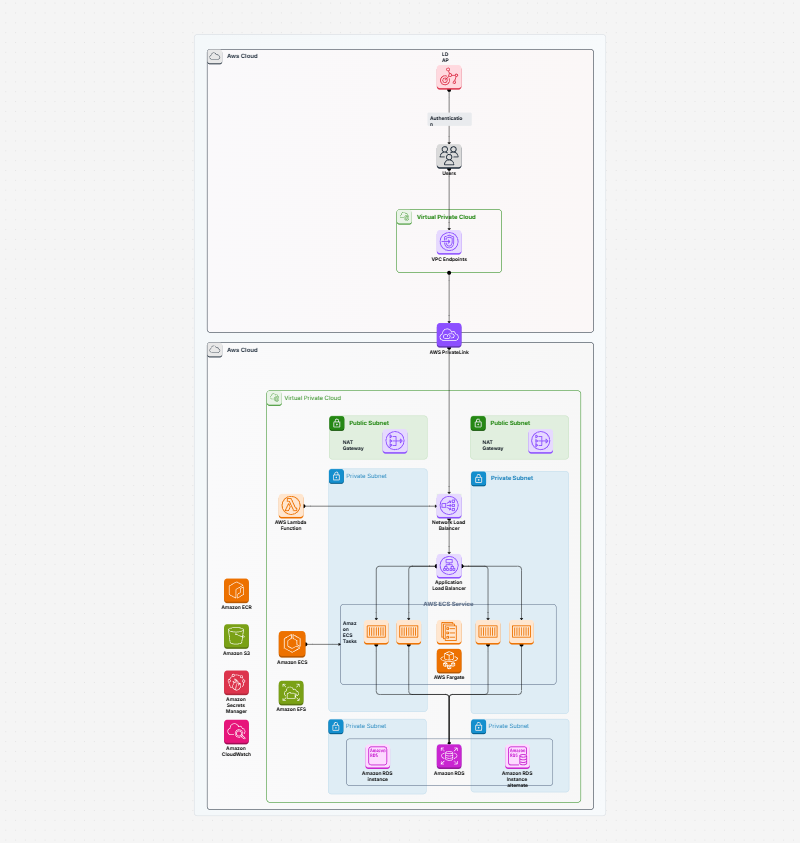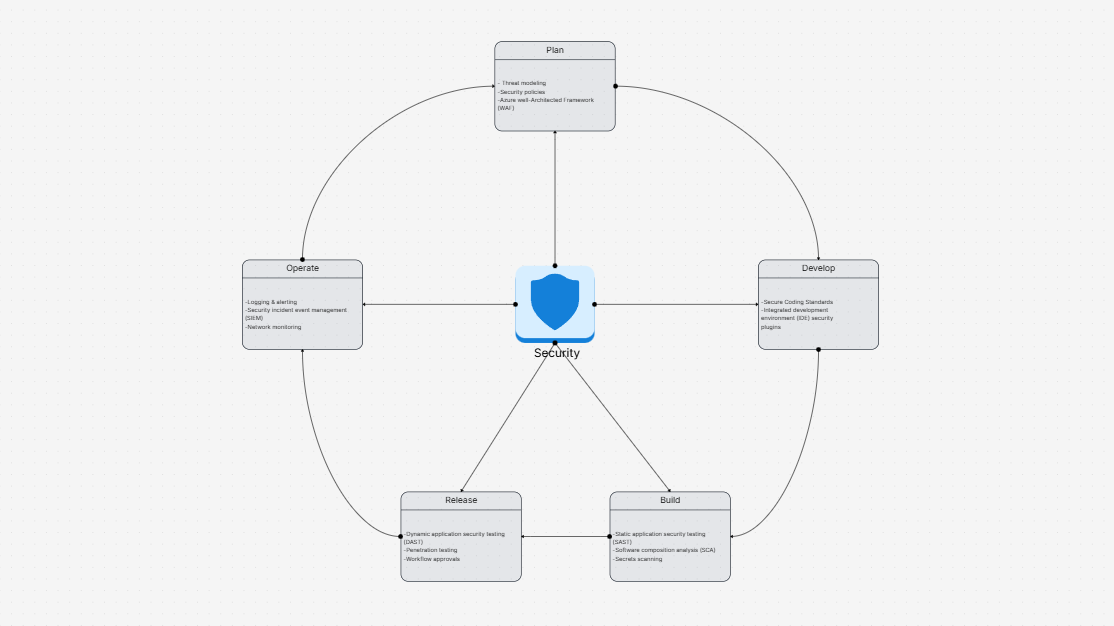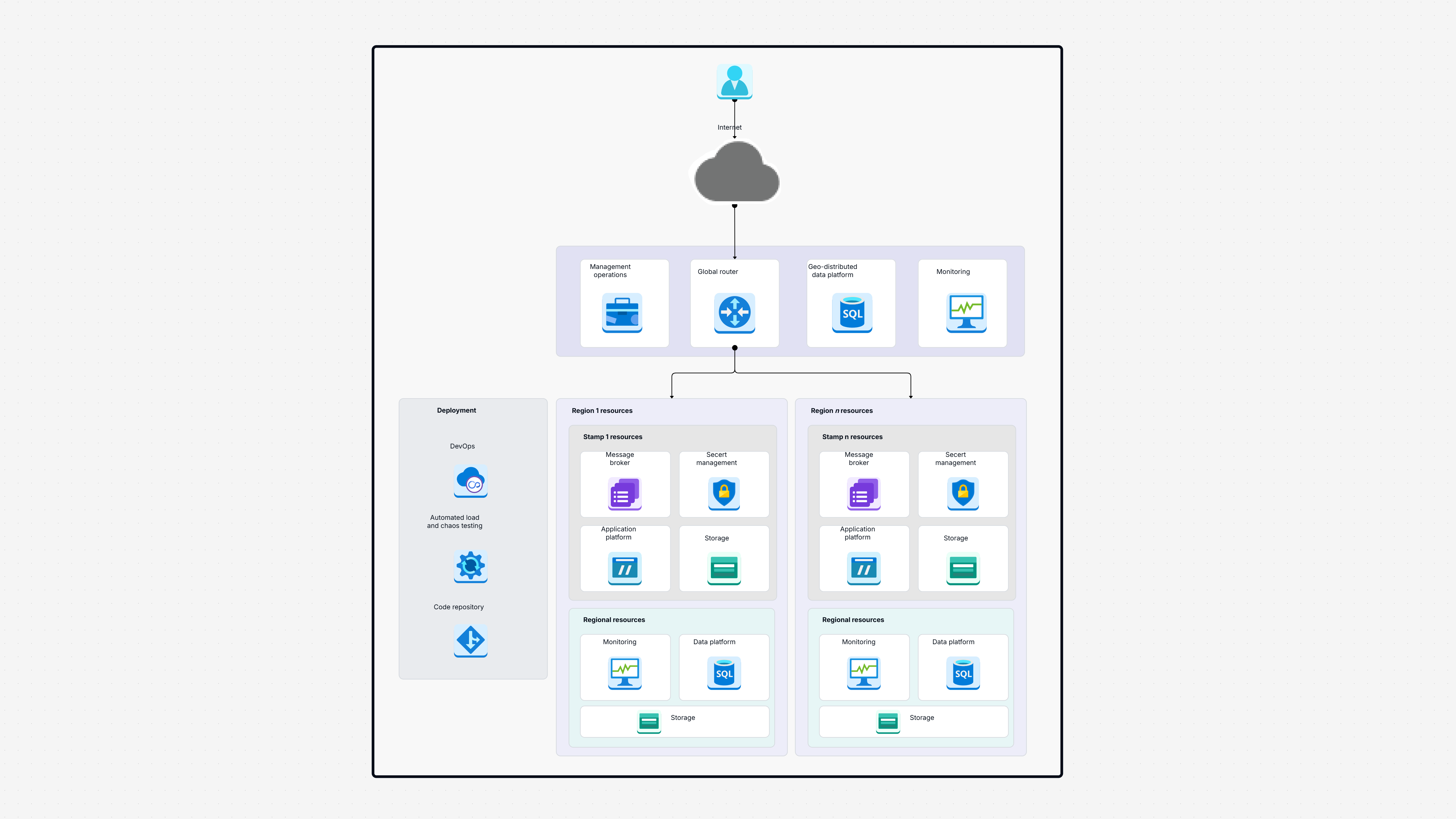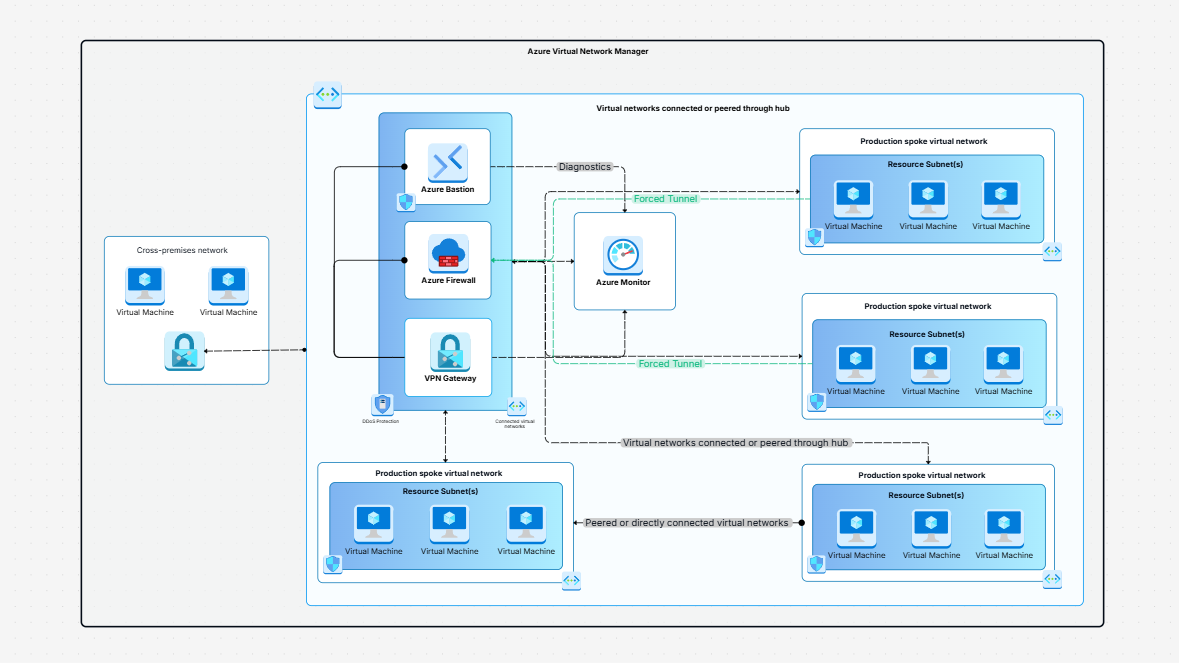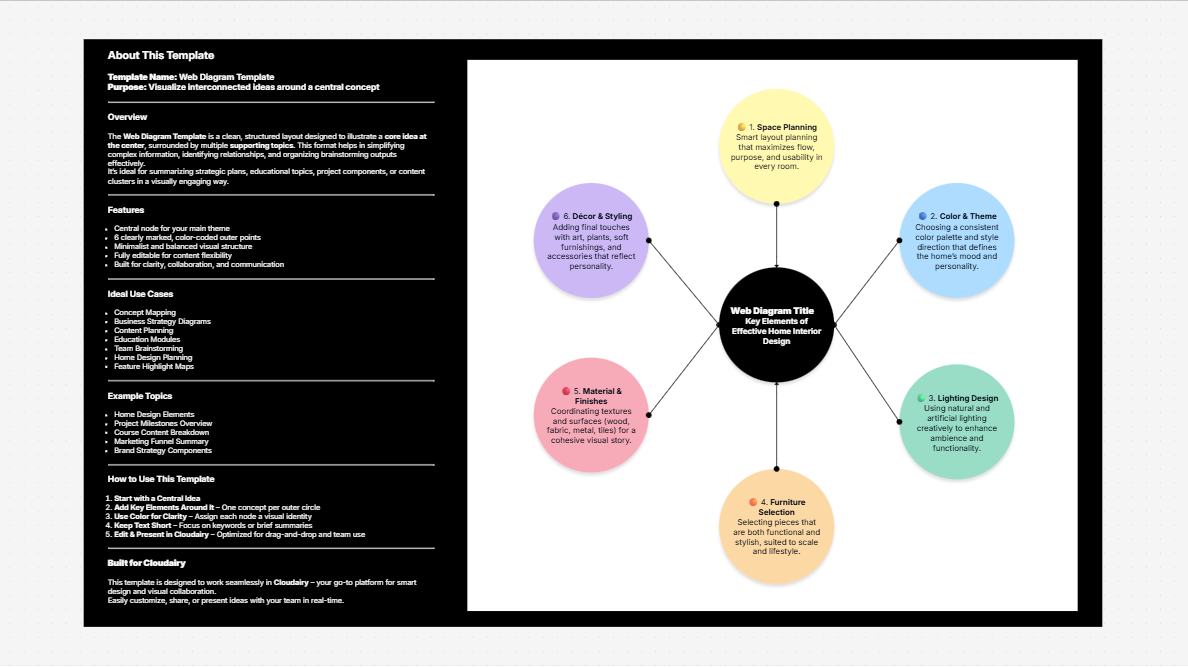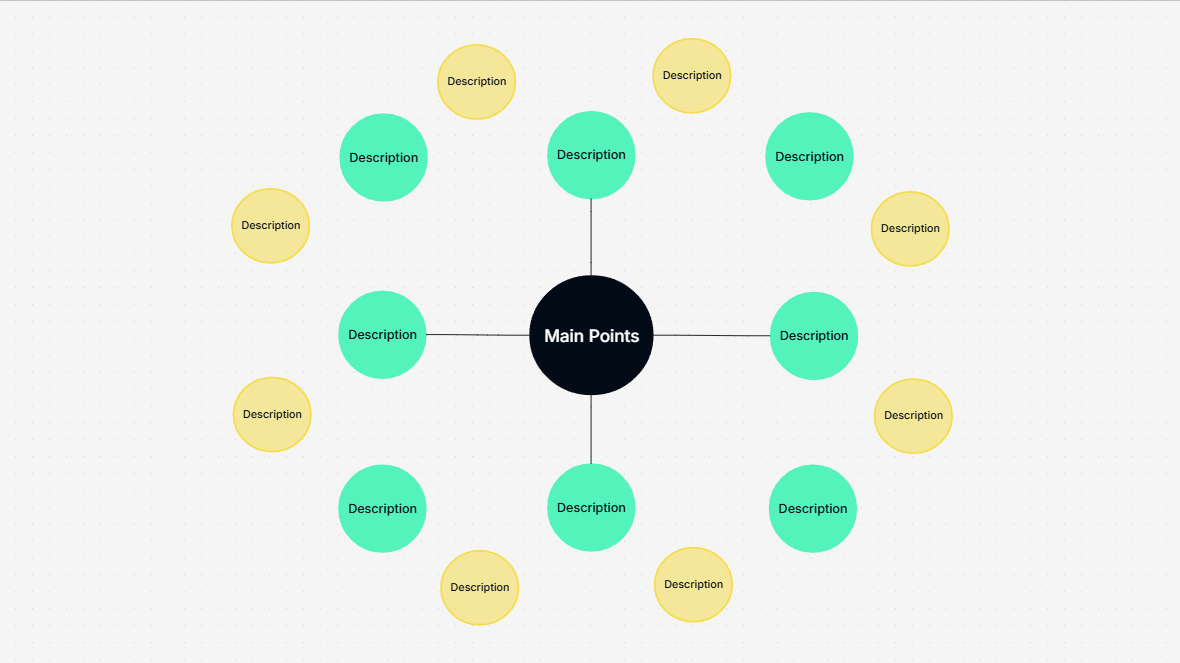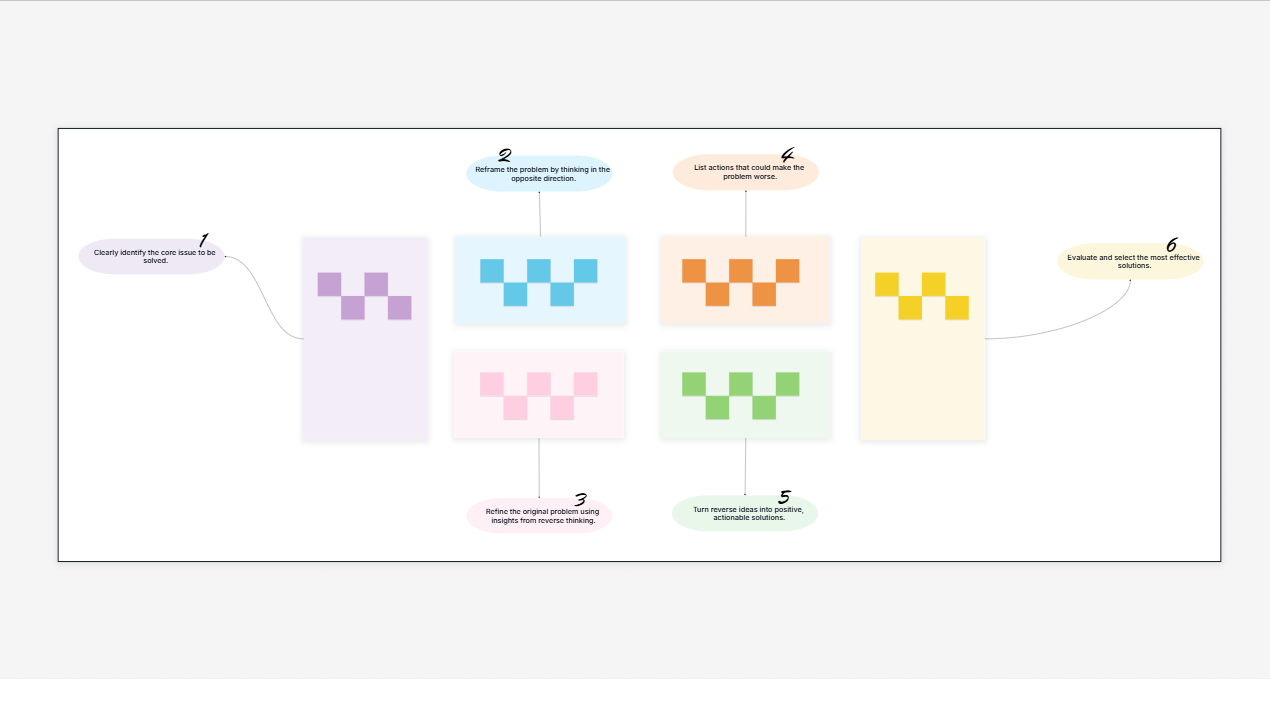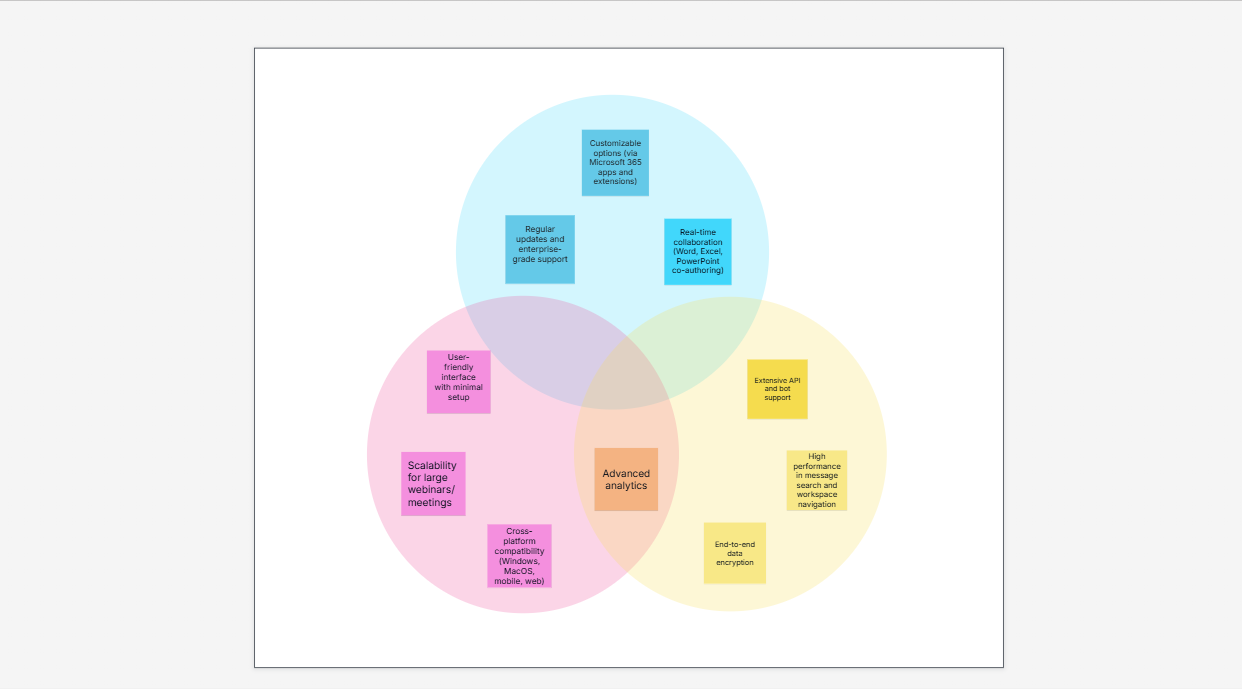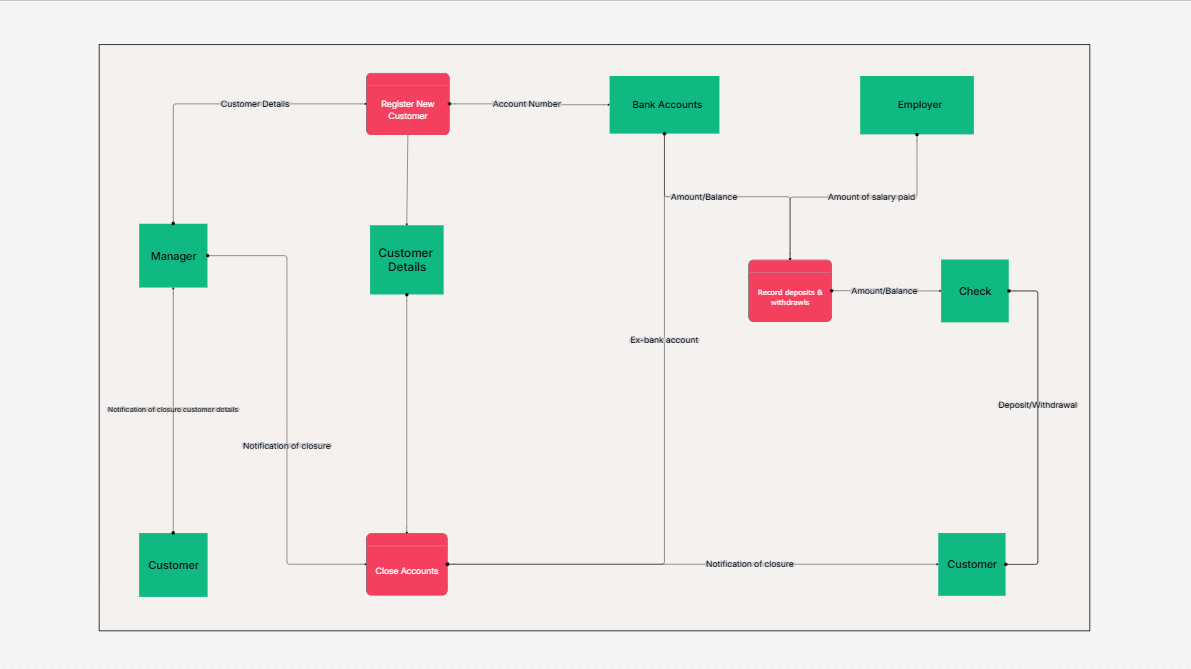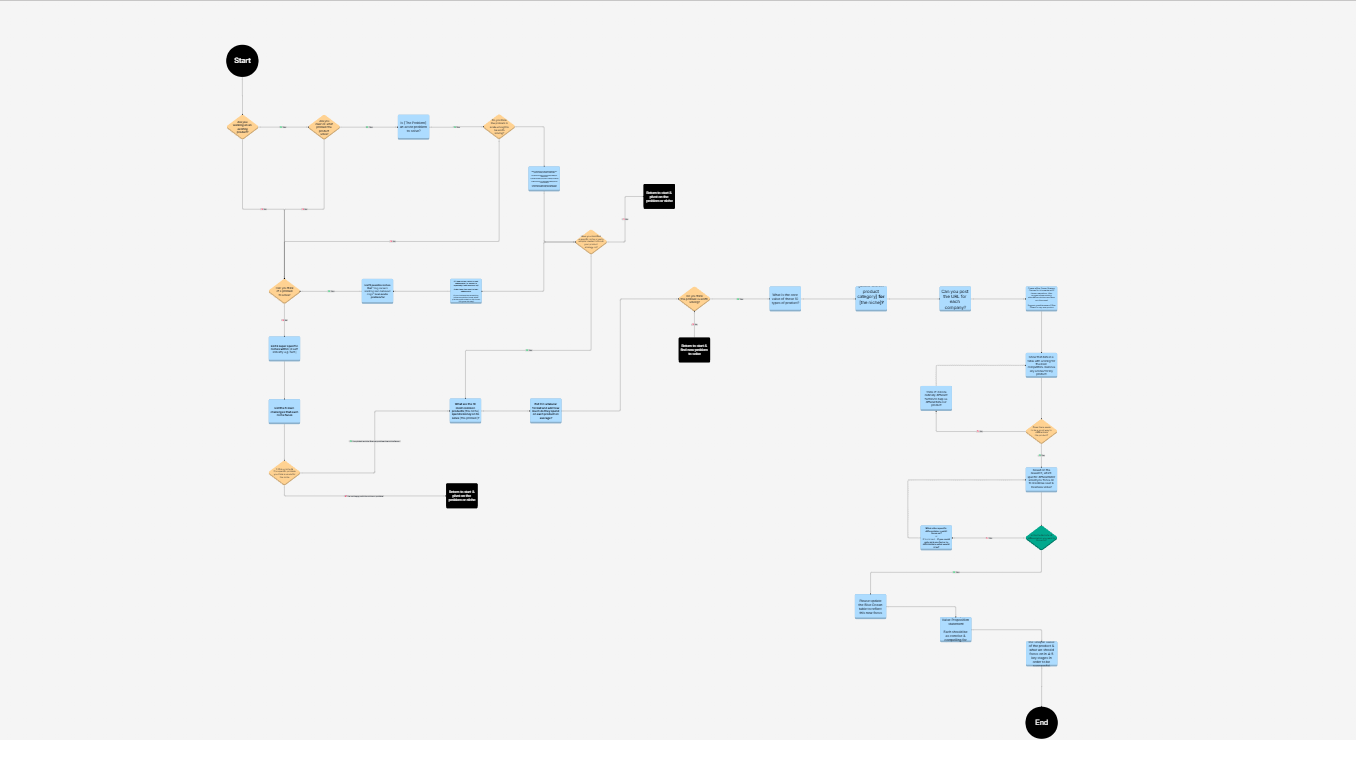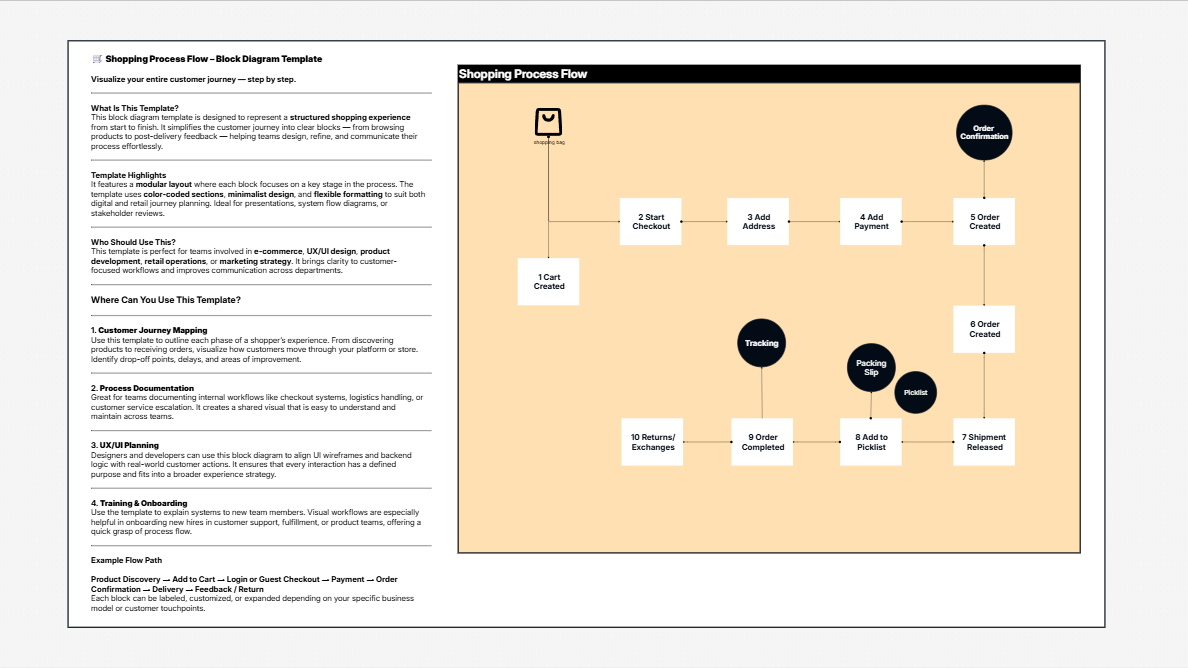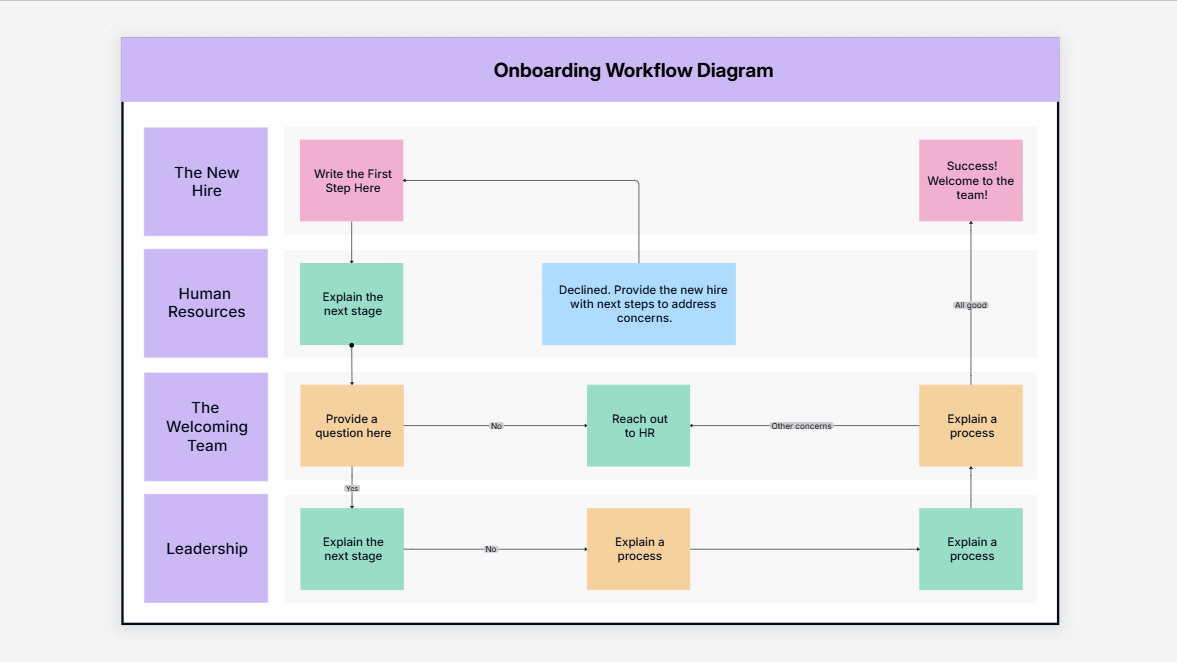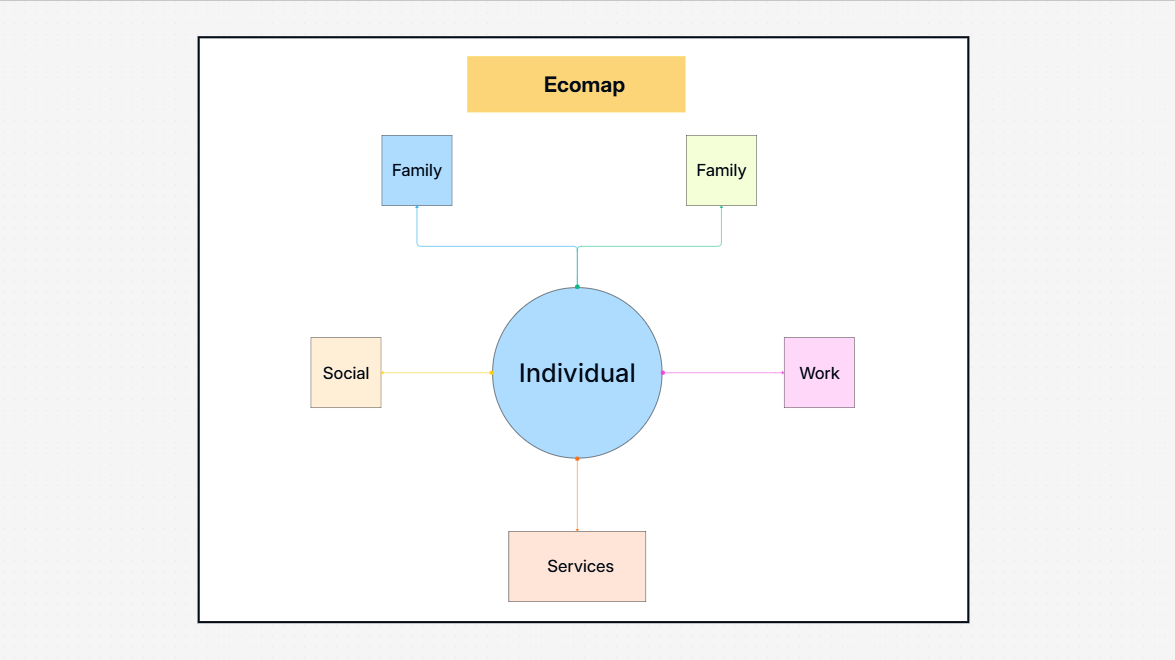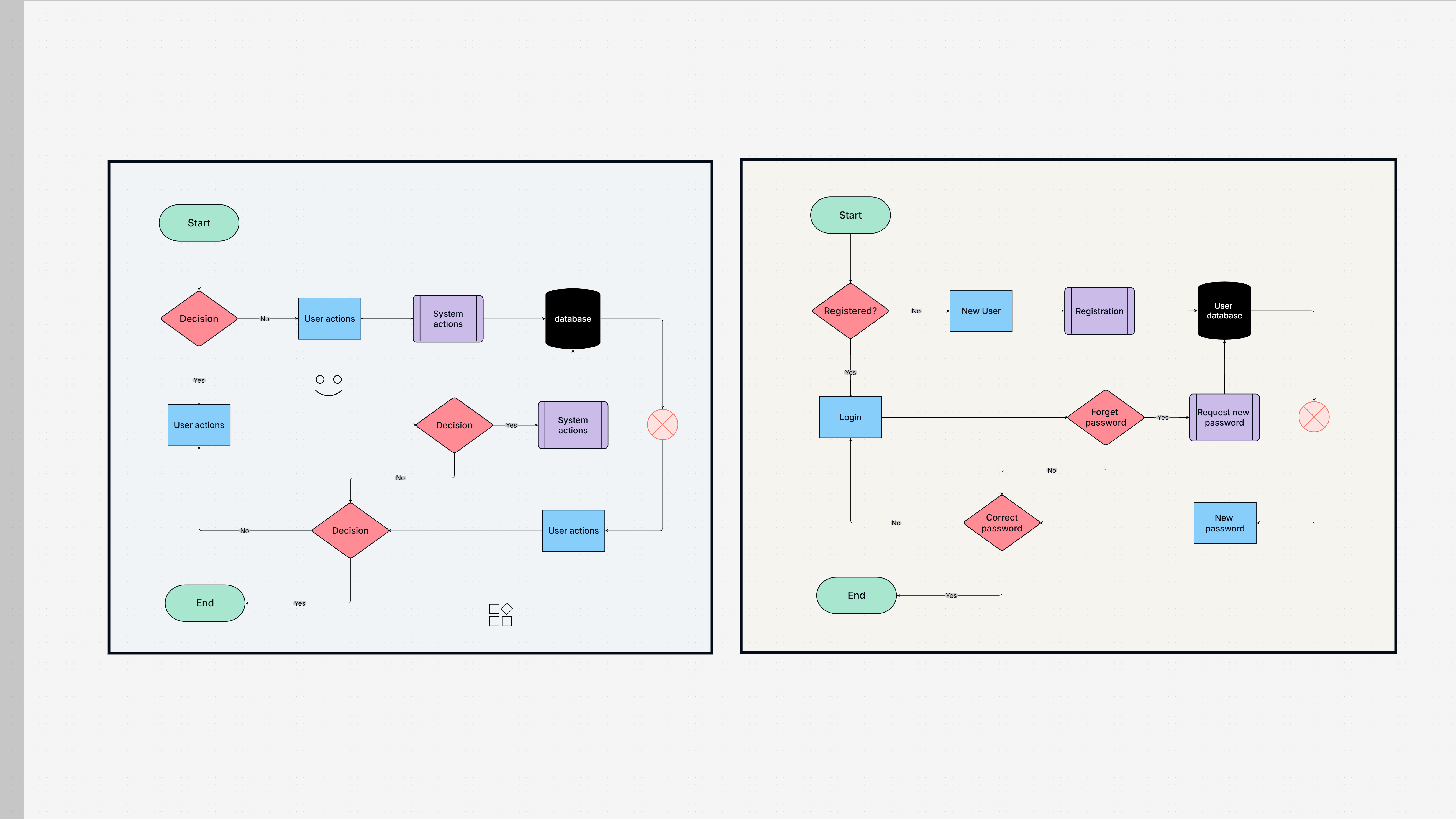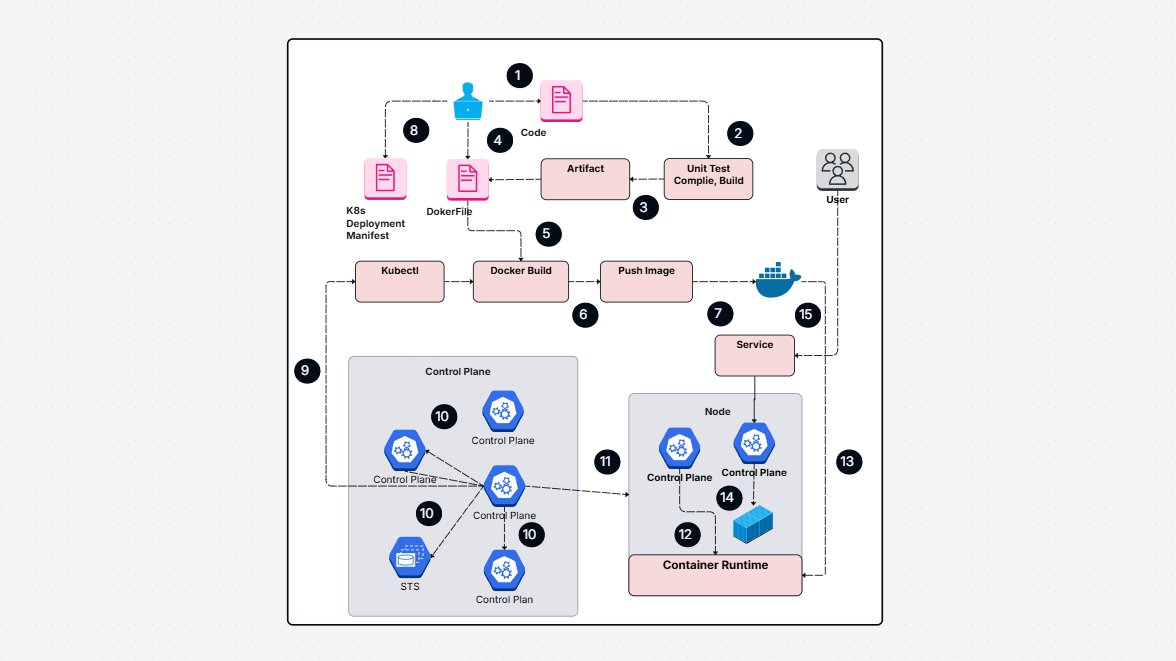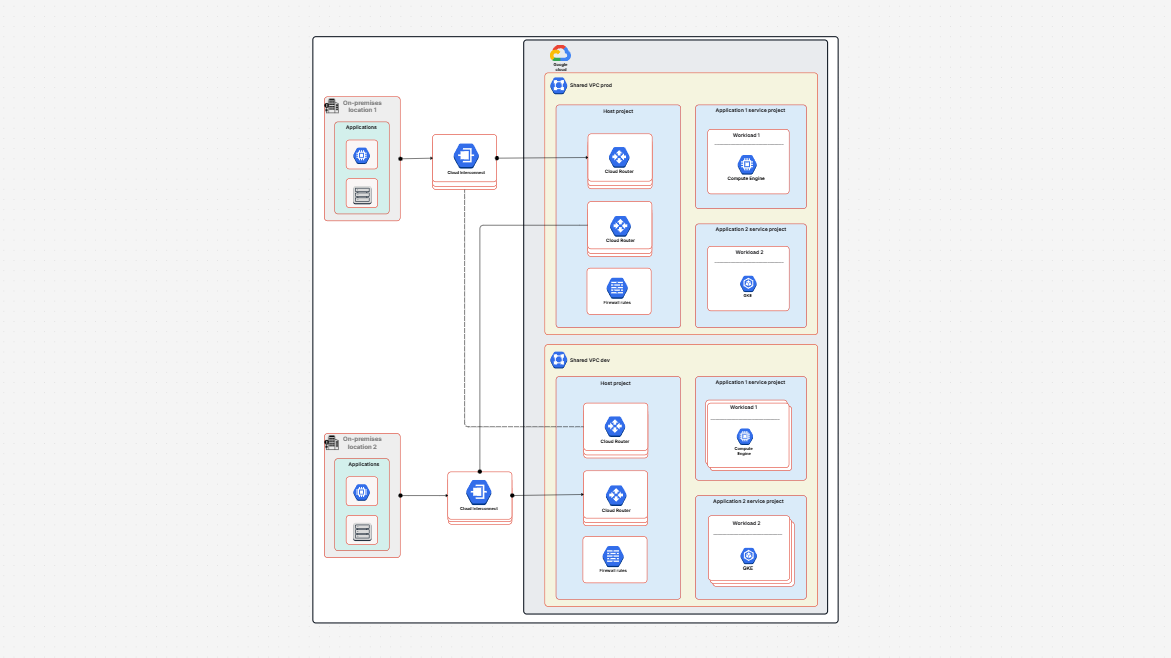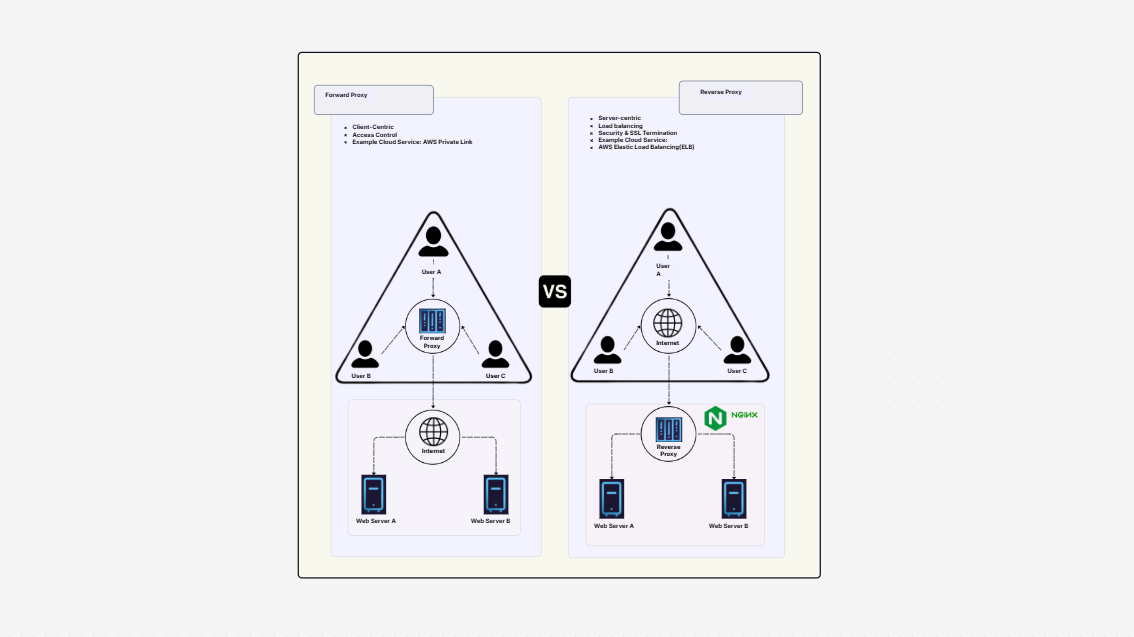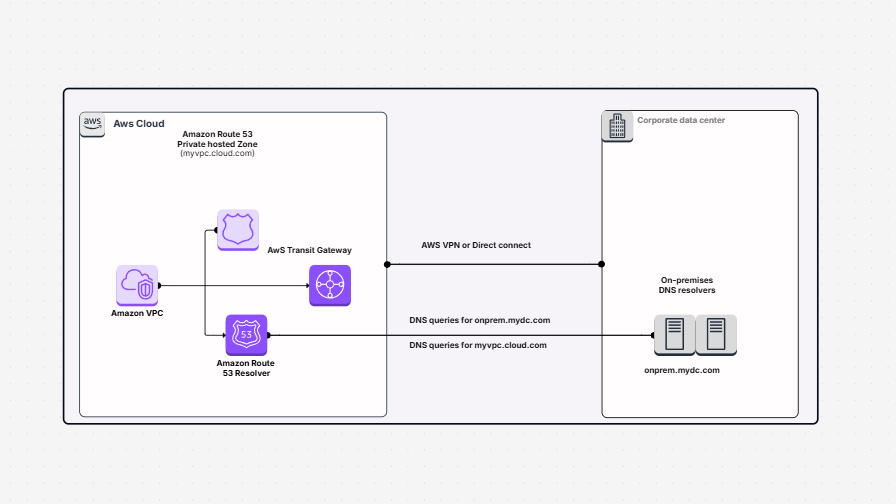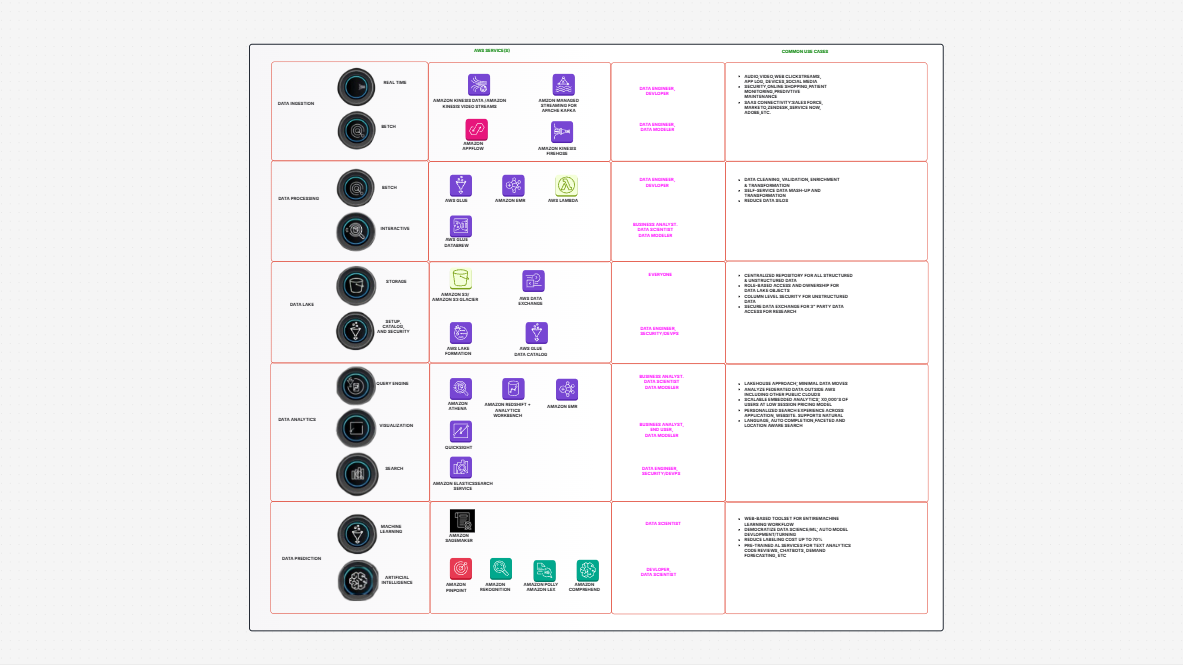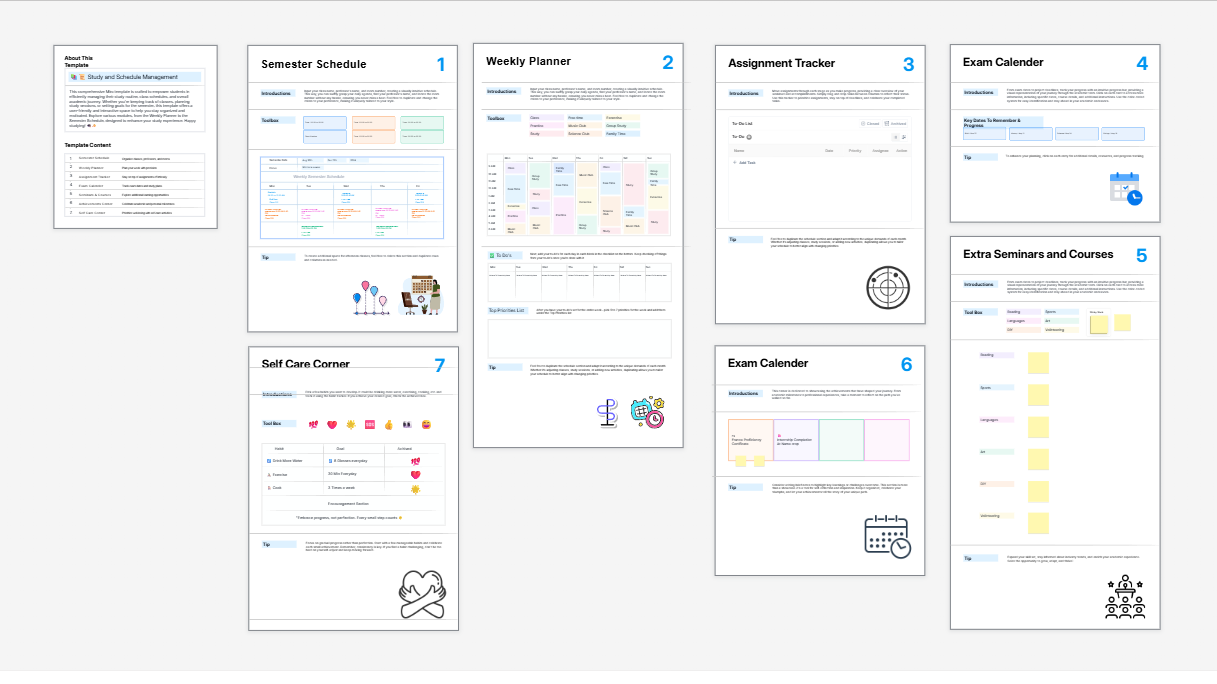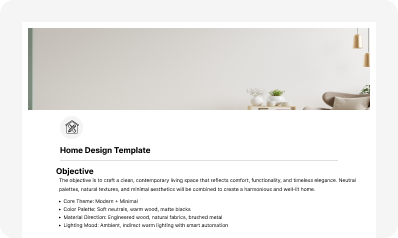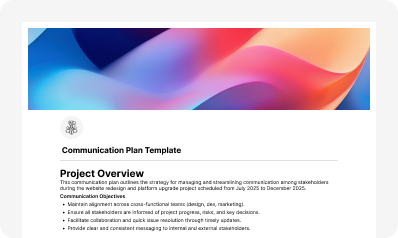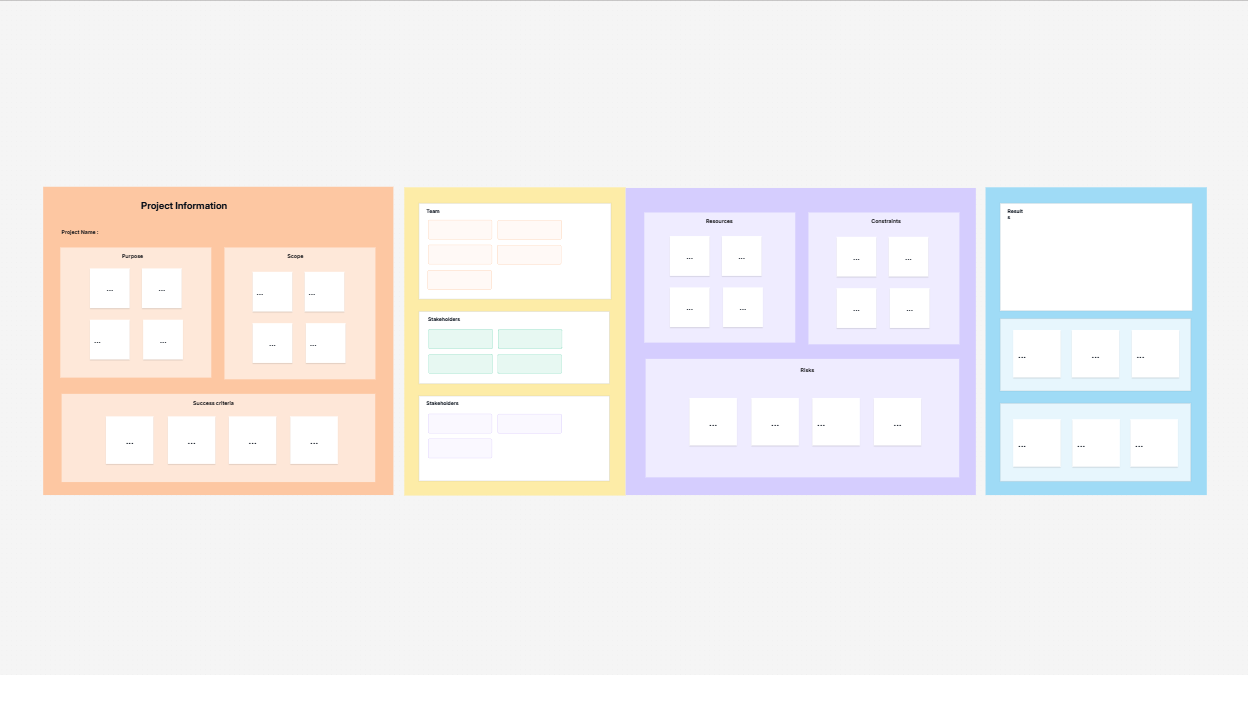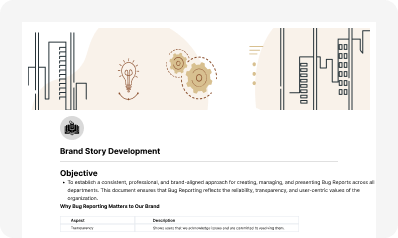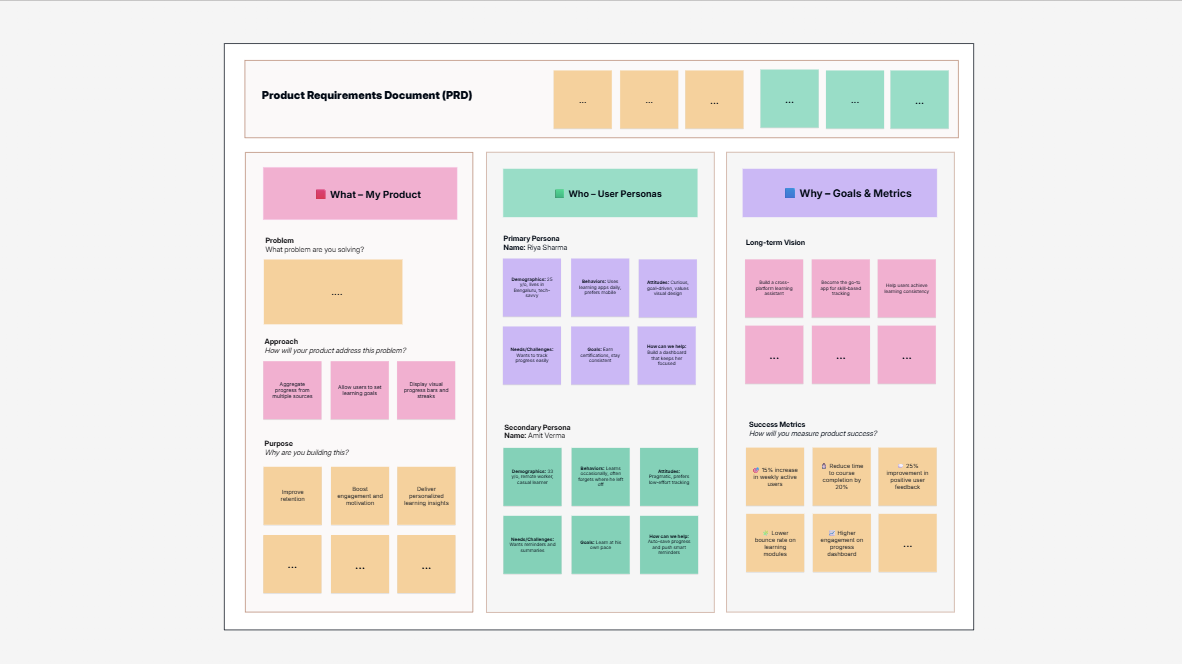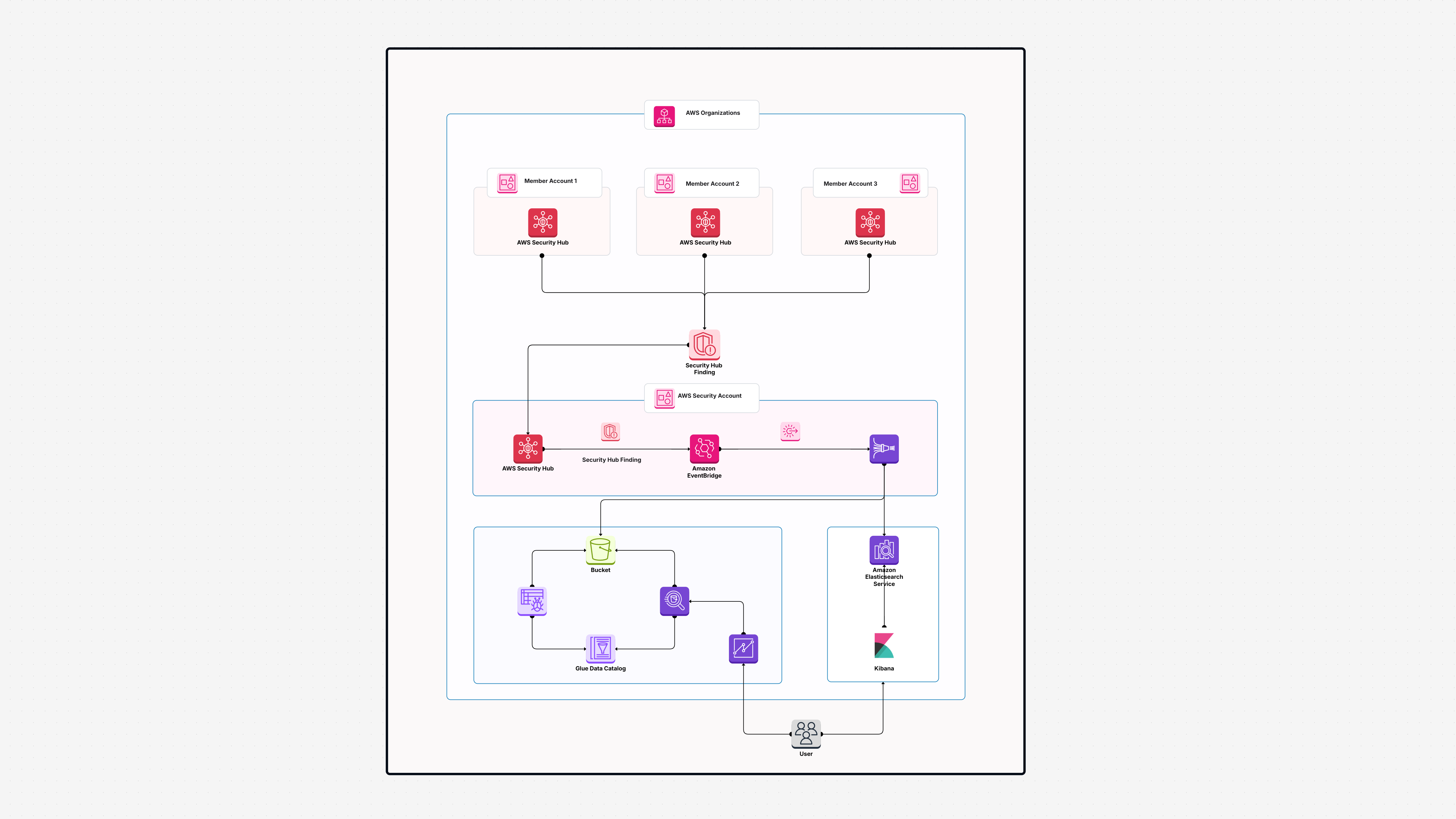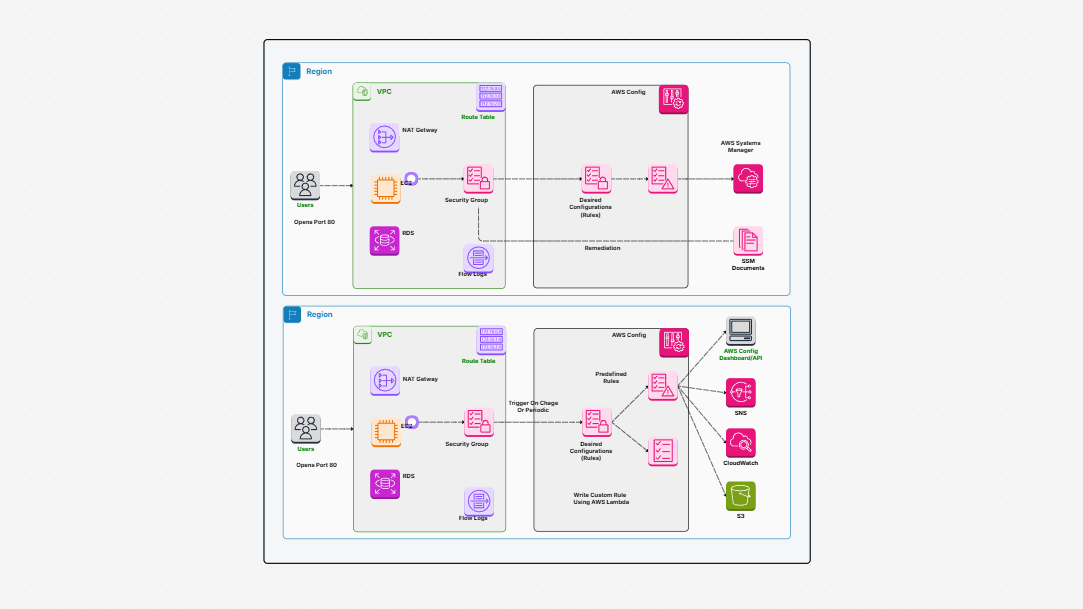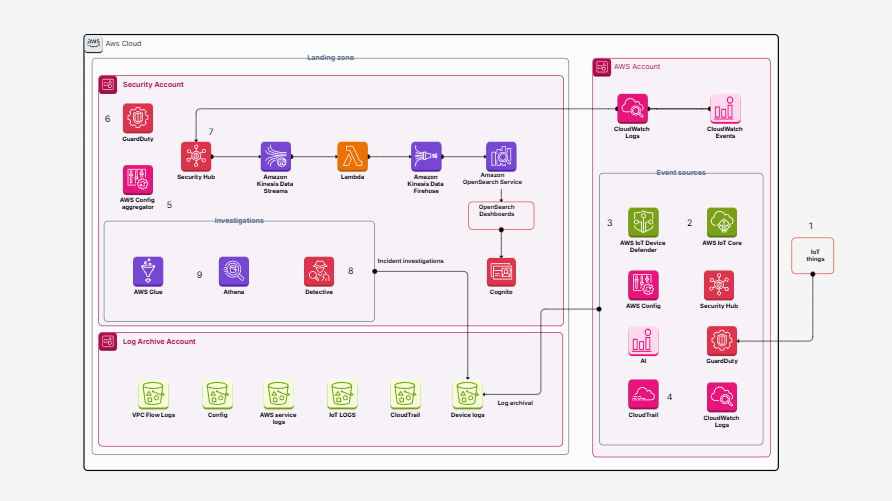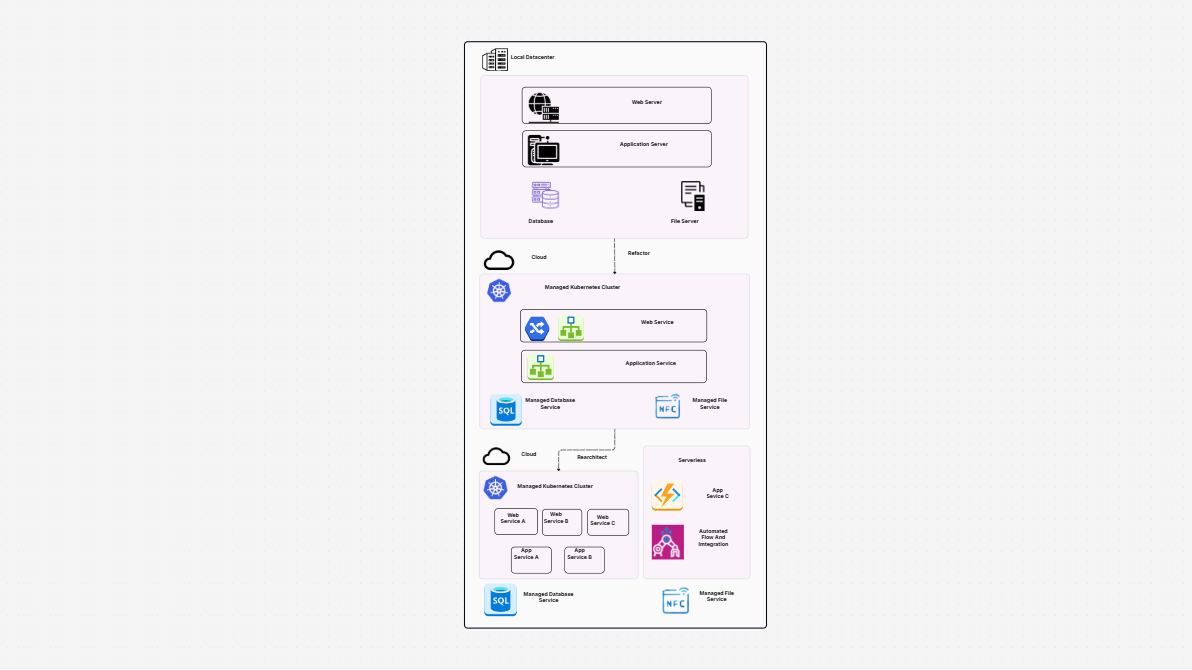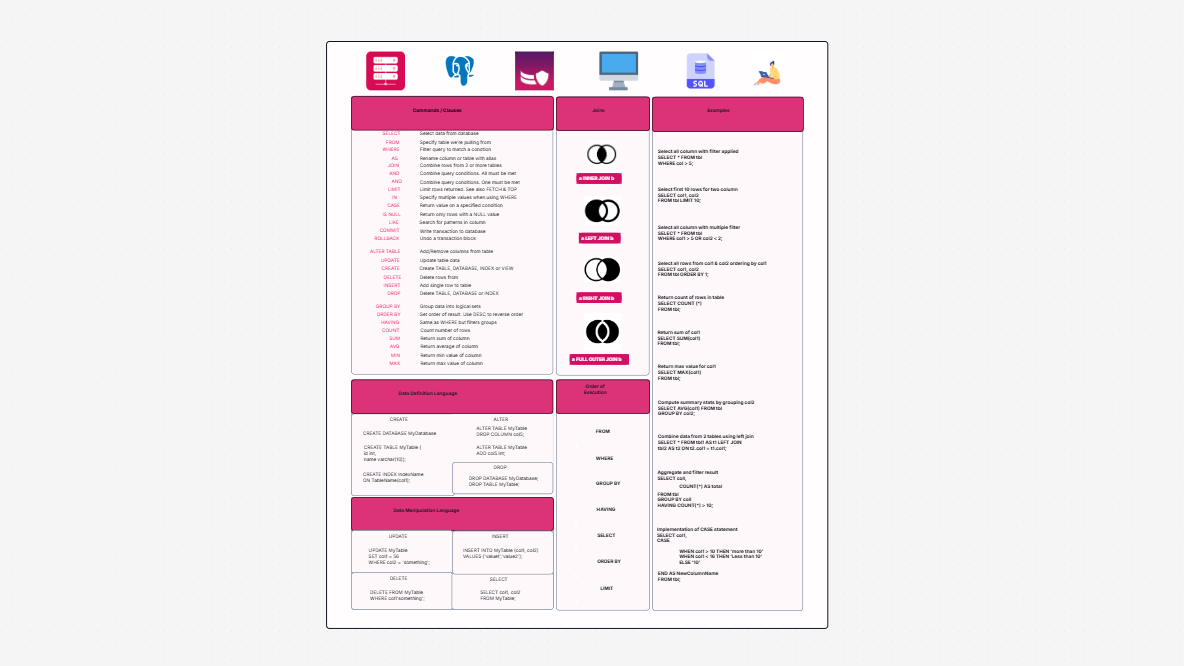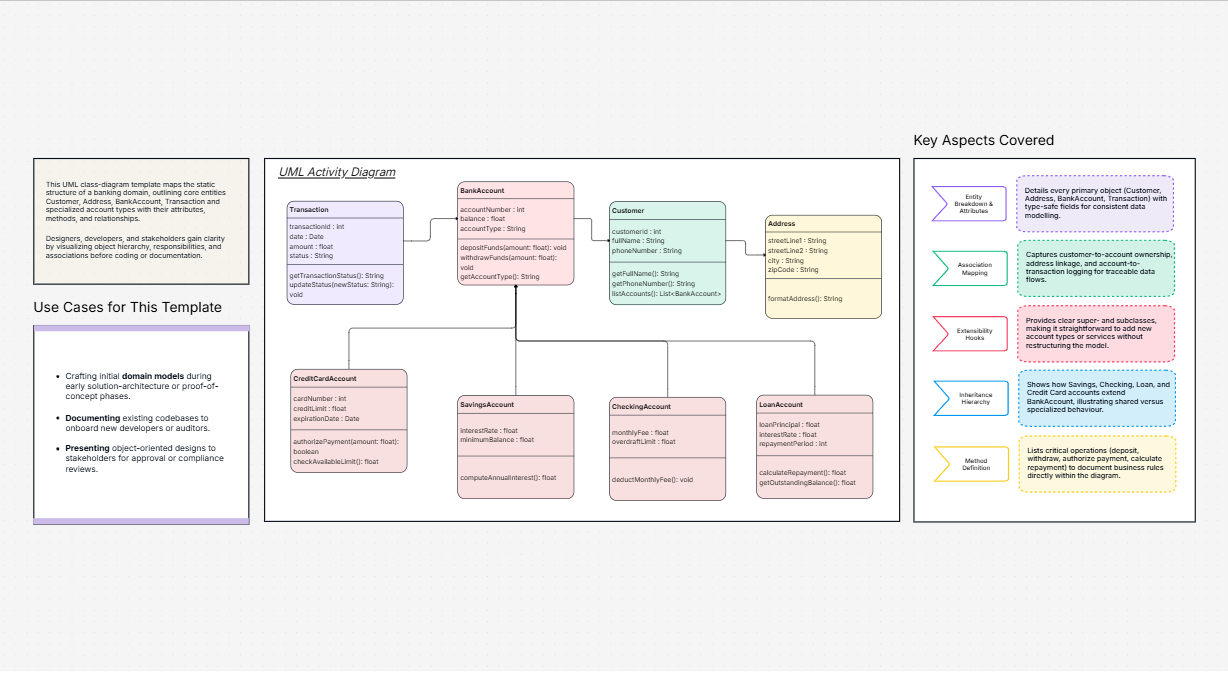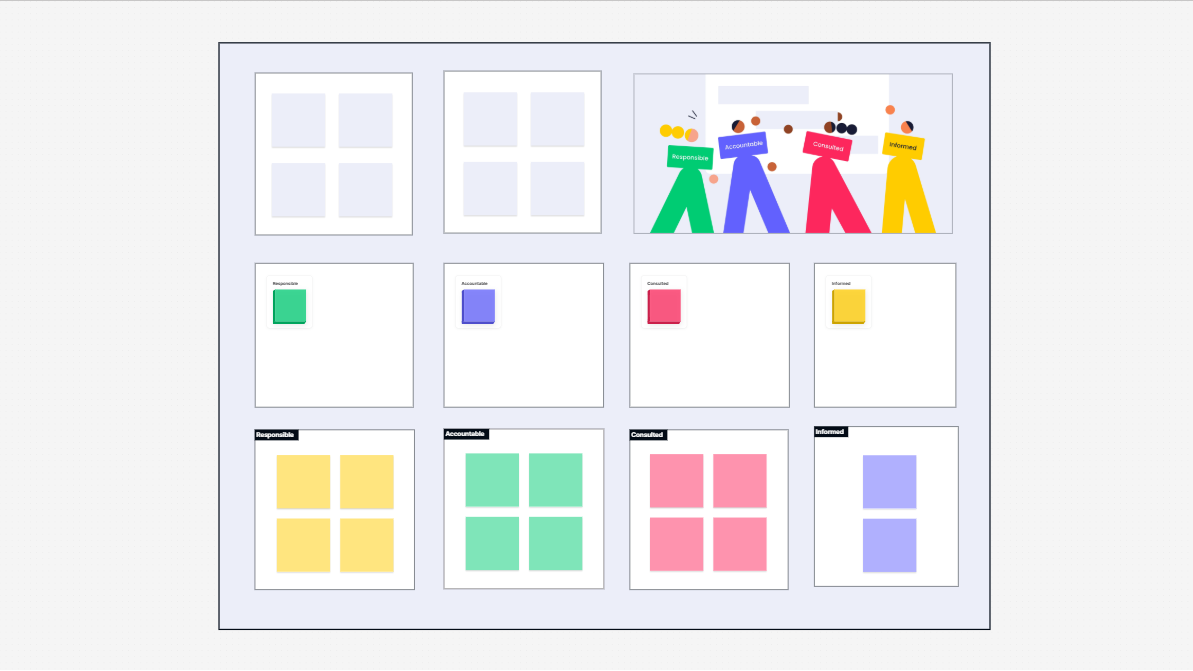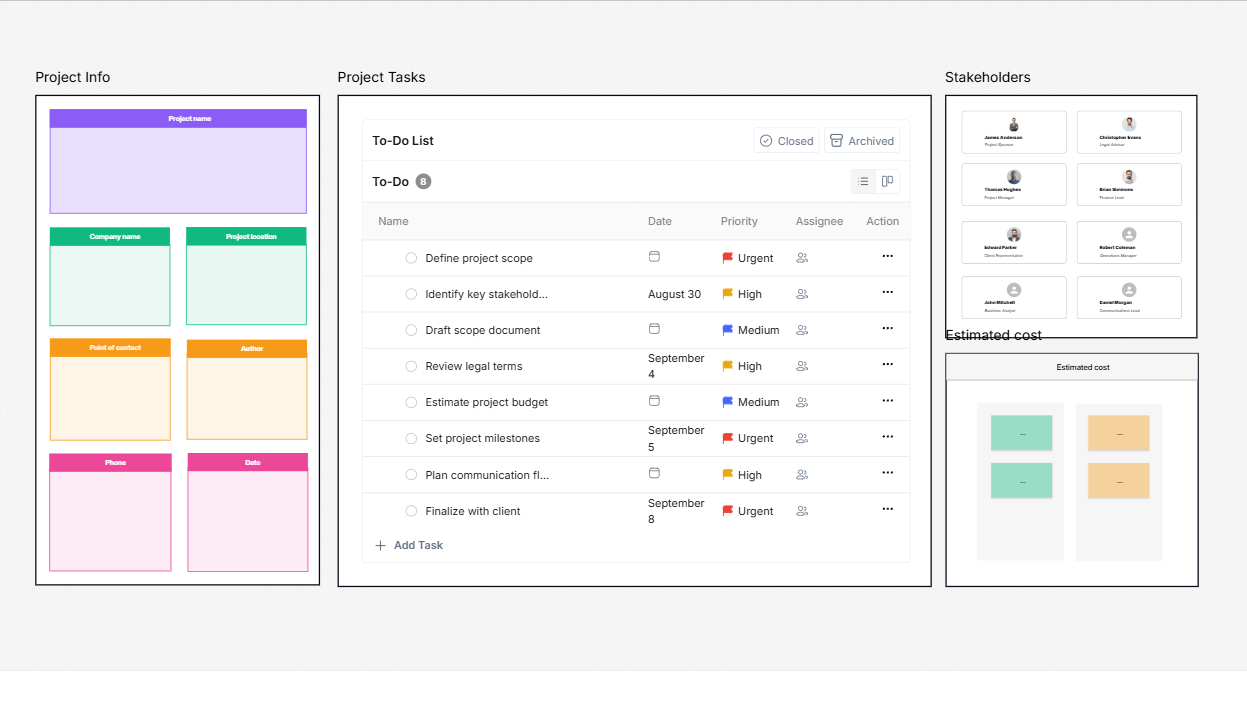WorkHub

What is the GCP Network Architecture Structure Template?
This template is your essential blueprint for creating a powerful and secure network within Google Cloud. Think of it as designing the complete nervous system for your cloud operations – mapping out how every part of your digital infrastructure communicates, both within the cloud and with your physical locations. It's a vital tool for comprehensive network design on GCP, showcasing:
- Centralized Network Management: It highlights the Shared VPC Host as the core for managing shared networking resources, allowing multiple projects to use the same network infrastructure efficiently.
- Seamless On-Premises Integration: It illustrates secure connectivity patterns like Dedicated Interconnect and Cloud VPN to establish robust links between your on-premises data centers and your Google Cloud workloads, crucial for a hybrid network setup.
- Smart Traffic Routing: It details how Cloud Router dynamically directs traffic and how Advertised Routes define external traffic handling, ensuring optimal flow within your GCP network architecture structure.
- Security at Every Layer: It emphasizes critical firewall rules for controlling network access and protecting your resources. IAM Policies are also shown to manage who can access network settings.
- Regional Workload Zones: The template defines Subnet Region 1 and Subnet Region 2, showing how to set up distinct workload zones across different geographical areas for high availability and performance.
- Efficient Load Balancing: It includes Cloud Load Balancer to distribute incoming traffic efficiently across your Workload Resources.
Why Embrace This Network Architecture Template?
Using this template offers significant advantages for anyone building and managing networks in Google Cloud:
- Master GCP Network Architecture Structure: Get a clear, visual understanding of how all network components fit together in a cohesive and scalable design.
- Optimize Network Design on GCP: Learn best practices for structuring VPCs, subnets, and connectivity options to meet enterprise requirements for security and performance.
- Implement Robust Firewall Rules: The template guides you in applying effective firewall rules to control traffic flow and enhance network security, crucial for protecting sensitive workloads.
- Understand Diverse Connectivity Patterns: Visualize and plan secure connections between your on-premises environments and cloud workloads using dedicated interconnects and VPNs.
- Ensure Scalability and High Availability: Design your network to efficiently handle increasing traffic and distribute workloads across multiple regions using components like Shared VPCs and Cloud Load Balancers.
- Improve Network Governance: A clear architectural diagram simplifies policy enforcement and communication across teams involved in your cloud network.
- Streamline Troubleshooting: A well-defined network structure makes it easier to identify and resolve network issues.
Who Benefits from This Network Template?
This template is incredibly useful for:
- Cloud Architects: For designing the overall GCP network architecture structure and defining network design on GCP principles.
- Network Engineers: To plan detailed connectivity patterns, implement firewall rules, and manage routing.
- DevOps Teams: To understand the network environment their applications will run within and how to configure service access.
- IT Managers: To oversee cloud networking strategy, security, and resource allocation.
- Security Professionals: To ensure network segmentation and access controls are properly enforced using firewall rules and IAM.
- Anyone Building Hybrid Cloud Solutions: Essential for visualizing and implementing seamless connections between on-premises and GCP.
How to Access This Template in Cloudairy?
- Log in to Cloudairy with your credentials.
- Navigate to the "Templates" section.
- Search for "GCP Network Architecture Structure".
- Click on the template to preview the design.
- Select "Open Template" to edit the architecture.
- Modify VPC settings and connectivity configurations.
Putting This Template to Work in Cloudairy
- Open the "GCP network architecture structure" template in Cloudairy.
- Configure VPCs, Dedicated Interconnects, and Cloud Routers to match your needs.
- Adjust Subnet policies for workload isolation, aiding in overall network design on GCP.
- Collaborate with your team to optimize firewall rules and traffic flow.
- Visualize inter-region connectivity and dependencies for various connectivity patterns.
- Export the finalized architecture for documentation and deployment.
Key Components of the Network Architecture
- Shared VPC Host – Centralized network management, foundational for your GCP network architecture structure.
- Cloud Router – Directs traffic between regions and networks, key for network design on GCP.
- Dedicated Interconnect – Secure, high-bandwidth connection for hybrid connectivity patterns.
- Advertised Routes – Defines how external traffic is handled by your network.
- Subnet Region 1 – First regional workload zone, part of your detailed network design on GCP.
- Subnet Region 2 – Second workload zone, enabling multi-region deployments.
- Workload Resource – Cloud-hosted applications (e.g., VMs, containers).
- Gateway – Entry point for network traffic, often part of connectivity patterns to on-premises.
- Firewall Rules – Security enforcement for traffic, a critical aspect of your GCP network architecture structure.
- Cloud VPN – Encrypts cross-region and hybrid communication.
- Cloud Load Balancer – Distributes traffic efficiently to workloads.
- Private Google Access – Enables internal API calls without public IPs.
- IAM Policies – Controls access to network resources and configurations.
Summary
This template provides a structured GCP network architecture structure, enabling secure and scalable connectivity across multiple regions while maintaining optimized traffic flow through smart network design on GCP. It clearly illustrates essential connectivity patterns and the role of strong firewall rules in your cloud environment.
FAQs
Q1: What's the main purpose of this template?
A1: This template visualizes the GCP network architecture structure, showing how to connect cloud services with on-premises environments securely and efficiently.
Q2: How does the template help with network design on GCP?
A2: It showcases shared VPC designs, routing mechanisms, and security best practices essential for effective network design on GCP.
Q3: Does the template include details about firewall rules?
A3: Yes, Firewall Rules are highlighted as a key component for security enforcement within the network.
Q4: What kind of connectivity patterns does it illustrate?
A4: It demonstrates connectivity patterns for hybrid cloud setups using Dedicated Interconnects and Cloud VPN between on-premises and GCP.
Q5: Who should use this template?
A5: Network engineers, cloud architects, DevOps teams, and anyone responsible for building and managing a GCP network architecture structure.
Q6: How does the template ensure efficient traffic routing?
A6: It includes Cloud Routers and Advertised Routes to manage dynamic routing and optimize traffic flow across the network.
Q7: Can this template be customized for specific needs?
A7: Yes, you can open and modify the template in Cloudairy to adjust VPC settings, subnets, and connectivity patterns to fit your unique network design on GCP.
Q8: Does it cover multi-region deployments?
A8: Yes, it includes Subnet Region 1 and Subnet Region 2 to illustrate network configurations across different geographical regions.
Q9: What is the role of a Shared VPC Host in this architecture?
A9: The Shared VPC Host centralizes network management, allowing multiple projects to use shared networking resources, simplifying network design on GCP.
Q10: Why are well-defined firewall rules important for GCP network architecture?
A10: Well-defined firewall rules are crucial for controlling network access, preventing unauthorized traffic, and enforcing security policies within your GCP network architecture structure.
Related GCP Architecture Diagram Templates
Find templates tailored to your specific needs. Whether you’re designing diagrams, planning projects, or brainstorming ideas, explore related templates to streamline your workflow and inspire creativity
Design, collaborate, innovate with Cloudairy
Unlock AI-driven design and teamwork. Start your free trial today










Design, collaborate, innovate with Cloudairy
Unlock AI-driven design and teamwork. Start your free trial today











